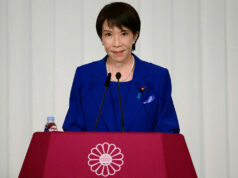Bigger budget deficit not expected to hurt Philippines’ credit profile

By Luz Wendy T. Noble, Reporter
THE PHILIPPINES still has room for a more aggressive fiscal response to blunt the impact of the coronavirus disease 2019 (COVID-19) pandemic, according to credit raters who said that the expected widening of the budget deficit will not affect the country’s credit standing as long as the debt rise is temporary.
Moody’s Investors Service and Fitch Ratings have “Baa2” and “BBB” debt ratings for the Philippines — both a notch above minimum investment grade — while S&P Global Ratings upgraded the country’s rating in May last year to “BBB+”, a step short of single “A” grade.
The International Monetary Fund (IMF) said separately that the country has enough buffers to cushion the pandemic’s economic impact.
“Fiscal accommodation will be a key part of a multi-faceted policy response to mitigating the economic and public health fallout from the coronavirus outbreak,” Christian de Guzman, senior vice-president at the Sovereign Risk Group of Moody’s Investors Service, said in an e-mailed response on Tuesday to BusinessWorld’s questions.
A recent report by the National Economic and Development Authority (NEDA) said the government’s budget deficit could balloon to as much as 4.4-5.4% of gross domestic product (GDP) this year, as “aggressive efforts to contain COVID-19, including the Luzon-wide quarantine, could by itself add pressure on the country’s fiscal position.”
President Rodrigo R. Duterte has signed into law a measure that gives him extra powers to combat the pandemic, including the ability to realign savings from the 2020 budget of agencies under the Executive branch. Around P200 billion will go to a emergency subsidy program for 18 million low-income households for two months.
Finance Secretary Carlos G. Dominguez III on Wednesday said the government is looking to borrow up to $2 billion from multilateral lenders to support increased government spending.
Mr. De Guzman noted that budget deficits are not the only indicator to gauge a country’s institutional strength.
“For example, despite the widening of the budget deficit in 2019, the government was able to record an improvement in other key metrics, such as debt as a share of GDP (public indebtedness) or interest payments as a share of government revenue (debt affordability),” he said.
Data from the Bureau of the Treasury (BTr) showed the budget deficit soared to a record P660.2 billion in 2019, breaching the P620-billion deficit programmed for the year and surpassing the P558.3-billion deficit in 2018. This brought deficit to GDP ratio of 3.55%, slightly higher than the 3.25% set for the year.
Debt-to-GDP ratio was marginally down at 41.5% in 2019 from 41.8% from the prior year despite a higher national debt of P7.731 trillion.
“Given improvements in these metrics over the past decade, the Philippine government has the space to implement fiscal stimulus measures without threatening its overall credit profile, as long as any consequent rise in debt or deterioration in debt affordability is temporary,” Mr. de Guzman said.
Stephen Schwartz, head of Asia Pacific Sovereign Ratings at Fitch Ratings, noted the country’s general government debt ratio is still well within the average for its similarly-rated peers and has seen a downtrend in the recent year.
“The Philippines’ general government debt[-to-GDP] ratio of around 36.5% in 2019 is broadly in line with similarly rated peers (the ‘BBB’ median is about 36%),” he said in an e-mail.
Mr. Schwartz said that they would watch supplementary spending measures from a rating perspective in the context of the country’s medium-term fiscal health. “We would typically seek to assess whether such measures are temporary, and what implications they may have over the medium term,” he added.
Moody’s Mr. De Guzman also noted the fiscal stimulus complements the central bank’s monetary easing and liquidity management.
The Bangko Sentral ng Pilipinas has already slashed its benchmark rate by 50 basis points (bps) and granted regulatory relief to banks. It is also buying P300 billion in government debt, and reducing the reserve requirement ratio for universal and commercial lenders by 200 bps.
POLICY BUFFERS
At the same time, IMF’s resident representative to the Philippines, Yongzheng Yang, said the country has enough policy buffers to deal with the economic fallout from the COVID-19 outbreak.
“The Philippines does have considerable policy buffers. It has a high level of [gross] international reserves (GIR), a relatively low level of public debt, and a sound banking system, just to mention a few,” Mr. Yang said in an e-mailed response to BusinessWorld’s questions.
Data from the central bank showed that GIR as of end-February was at $87.606 billion, higher than the January level of $86.868 billion and the $82.78 billion seen in the same month of 2019. This GIR level is equal to 5.4 times the country’s short-term external debt based on original maturity and 3.8 times based on residual maturity, according to the BSP.
In an interview with ABS-CBN News Channel, Mr. Yang said that the country should ensure its debt is sustainable although its current level is relatively low. “[Y]ou (Philippines) can certainly go up… The purpose for having buffer is you use it for crisis like this. So my view is that you should be using the spaces the government has accumulated and fight this virus and to protect the people to get the economy back running,” he told ANC on Thursday.
Mr. Yang said the IMF will lower its current growth forecast of 6.3% for the Philippines to reflect the impact of the COVID-19 outbreak.
“Like in most other countries, the COVID-19 pandemic is having a significant impact on the Philippine economy. It is affecting tourism, trade, retail, investor sentiment, etc. We will revise downward our current growth forecasts to reflect the impact in these areas and release the revised forecasts during the IMF/World Bank Spring Meetings next month,” he said.
The NEDA on Tuesday released a study showing economic growth may slow to -0.6%-4.3% this year. This compares to the 6.5-7.5% government target, which was set before the COVID-19 pandemic began.



